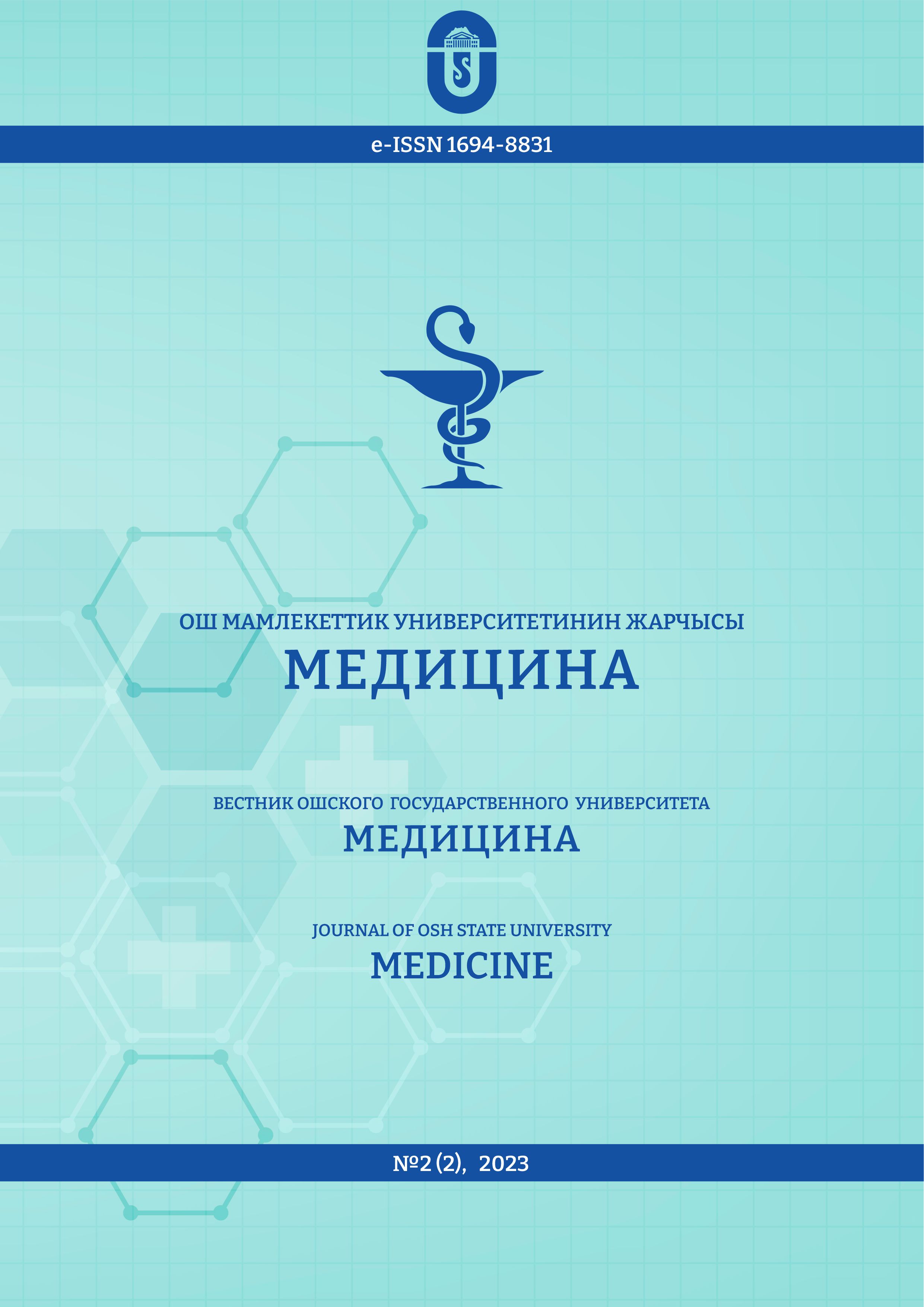THE IMPACT OF HYPERTENSION ON COVID-19 SEVERITY: A GLOBAL REVIEW
DOI:
https://doi.org/10.52754/16948831_2023_2(2)_5Keywords:
COVID-19, hypertension, pandemic, comorbiditiesAbstract
Hypertension, also known as high blood pressure, is a prevalent medical condition that can exacerbate the severity of coronavirus disease 2019 (COVID-19). Studies from around the globe have shown that hypertensive patients infected with severe acute respiratory syndrome coronavirus 2 (SARS-CoV-2) tend to experience more severe symptoms and have poorer outcomes. A meta-analysis of eight studies from China found that hypertensive patients were over twice as likely to develop severe COVID-19 illness that requires intensive care unit admission, mechanical ventilation or results in death. Several other analyzes of data from China, Italy, and the United States have come to similar conclusions, showing roughly double the risk of adverse outcomes in hypertensive patients. In summary, hypertension appears strongly linked to worse COVID-19 outcomes across the world. Patients should maintain good blood pressure control and take recommended precautions to avoid SARS-CoV-2 infection. Clinicians should closely monitor hypertensive patients diagnosed with COVID-19 due to their increased risk of critical illness. Continued research on how hypertension influences COVID-19 severity can help guide therapeutic approaches for this high-risk population.
References
World Health Organization (2020) Coronavirus Disease (COVID-19) Outbreak. World Health Organization. Available at https://www.who.int/emergencies/diseases/novel-coronavirus-2019 (Accessed 8 February 2020).Google Scholar
Zhou, P et al. (2020) A pneumonia outbreak associated with a new coronavirus of probable bat origin. Nature 579, 270–273.
Hoffmann, M et al. (2020) SARS-CoV-2 cell entry depends on ACE2 and TMPRSS2 and is blocked by a clinically proven protease inhibitor. Cell 181, 271–280.
Wu, Z and McGoogan, JM (2020) Characteristics of and important lessons from the Coronavirus Disease 2019 (COVID-19) outbreak in China: summary of a report of 72 314 cases from the Chinese Center for Disease Control and Prevention. The Journal of the American Medical Association 323, 1239–1242.
NCD Risk Factor Collaboration (NCD-RisC) (2017) Worldwide trends in blood pressure from 1975 to 2015: a pooled analysis of 1479 population-based measurement studies with 19.1 million participants. Lancet (London, England) 389, 37–55.
Chow, CK et al. (2013) Prevalence, awareness, treatment, and control of hypertension in rural and urban communities in high-, middle-, and low-income countries. The Journal of the American Medical Association 310, 959–968.
Wang, D et al. (2020) Clinical characteristics of 138 hospitalized patients with 2019 novel coronavirus-infected pneumonia in Wuhan, China. The Journal of the American Medical Association 323, 1061–1069.
Guan, WJ et al. (2020) Clinical characteristics of coronavirus disease 2019 in China. The New England Journal of Medicine 382, 1708–1720.
Li, B et al. (2020) Prevalence and impact of cardiovascular metabolic diseases on COVID-19 in China. Clinical Research in Cardiology 109, 531–538.
Xu, XW et al. (2020) Clinical findings in a group of patients infected with the 2019 novel coronavirus (SARS-Cov-2) outside of Wuhan, China: retrospective case series.
Novel Coronavirus Pneumonia Emergency Response Epidemiology Team (2020) [The epidemiological characteristics of an outbreak of 2019 novel coronavirus diseases (COVID-19) in China]. Zhonghua Liu Xing Bing Xue Za Zhi 41, 145–151.
World Health Organization (2020) Clinical Management of Severe Acute Respiratory Infection When Novel Coronavirus (nCoV) Infection is Suspected: Interim Guidance. World Health Organization. Availableat https://www.who.int/publications-detail/clinical-management-of-severe-acute-respiratory-infection-when-novel-coronavirus-(ncov)-infection-is-suspected (Accessed 28 January 2020).Google Scholar
National Health Commission (2020) Notification for the Practice Guideline of the 2019 Novel Coronavirus Disease (version seventh). National Health Commission. Available at http://www.gov.cn/zhengce/zhengceku/2020-03/04/content_5486705.htm (Accessed 04 March 2020).Google Scholar
Mehra, MR et al. (2020) Cardiovascular disease, drug therapy, and mortality in Covid-19. The New England Journal of Medicine 382, e102.
Gutierrez, F et al. (2006) The influence of age and gender on the population-based incidence of community-acquired pneumonia caused by different microbial pathogens. The Journal of Infection 53, 166–174.
Medetalibeyoglu A, Emet S, Kose M, et al. Serum endocan levels on admission are associated with worse clinical outcomes in COVID-19 patients: a pilot study. Angiology 2021; 2: 187–193.
Wan S, Yi Q, Fan S, et al. Relationships among lymphocyte subsets, cytokines, and the pulmonary inflammation index in coronavirus (COVID-19) infected patients. Br J Haematol 2020; 3: 428–437.
Qin C, Zhou L, Hu Z, et al. Dysregulation of immune response in patients with coronavirus 2019 (COVID-19) in Wuhan, China. Clin Infect Dis 2020; 15: 762–768.
Imam Z, Odish F, Gill I, et al. Older age and comorbidity are independent mortality predictors in a large cohort of 1305 COVID-19 patients in Michigan, United States. J Intern Med 2020; 4: 469–476.
Tadic M, Cuspidi C, Grassi G, Mancia G. COVID‐19 and arterial hypertension: hypothesis or evidence? J Clin Hypertens 2020; 22: 1120–1126.
Sanlialp SC, Sanlialp M. Impact of hypertension on the prognosis of COVID-19 disease and uncertainties that need to be clarified. Angiology 2021; 14: 33197211032784. doi: 10.1177/00033197211032784.
Momtazi-Borojeni AA, Banach M, Reiner Ž, et al. Interaction between coronavirus s-protein and human ACE2: hints for exploring efficient therapeutic targets to treat COVID-19. Angiology 2021; 2: 122–130.
Iheanacho CO, Odili VU, Eze UIH. Risk of SARS-CoV-2 infection and COVID-19 prognosis with the use of renin-angiotensin-aldosterone system (RAAS) inhibitors: a systematic review. Future J Pharm Sci 2021; 7: 73.
Bozkurt B, Kovacs R, Harrington B. Joint HFSA/ACC/AHA statement addresses concerns Re: using RAAS antagonists in COVID-19. J Card Fail 2020; 26: 370.
European Societies of Cardiology . Position Statement of ESC Council on Hypertension on ACE Inhibitors and Angiotensin Receptor Blockers. https://www.escardio.org/Councils/Council-on-Hypertension-(CHT)/News/position-statement-of-the-esc-council-on-hypertension-on-ace-inhibitors-and-ang (Accessed 13 March 2020) .
Gheblawi M, Wang K, Viveiros A, et al. Angiotensin-converting enzyme 2: SARS-CoV-2 receptor and regulator of the renin-angiotensin system: celebrating the 20th anniversary of the discovery of ACE2. Circ Res 2020; 10: 1456–1474.
Patel VB, Zhong J-C, Grant MB, Oudit GY. Role of the ACE2/Angiotensin 1-7 axis of the renin-angiotensin system in heart failure. Circ Res 2016; 118: 1313–1326.
Wang K, Gheblawi M, Oudit GY. Angiotensin converting enzyme 2. Circulation 2020; 142: 426–428.
Downloads
Published
How to Cite
Issue
Section
License
Copyright (c) 2024 Journal of Osh State University. Medicine

This work is licensed under a Creative Commons Attribution-NonCommercial 4.0 International License.

